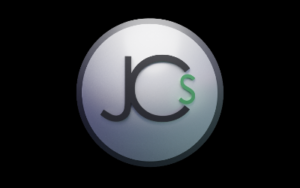Menu Terms & Conditions Privacy Policy Cookie Policy J. CAMARENA...
Read MoreJ. CAMARENA STUDIO - BILINGUAL DIGITAL MARKETING SERVICES
Starting from Scratch: Should New Businesses Begin with Organic or Paid Traffic for Product Sales?
When launching a new business, one of the primary challenges is generating sales through your online presence. Choosing between focusing on organic or paid traffic to drive product sales is a strategic decision that significantly affects your business’s growth trajectory and sustainability. This article delves into the pros and cons of each approach to aid new business owners in making a well-informed choice.
Understanding Organic Traffic
Organic traffic refers to visitors who find your website through unpaid search engine results. It is highly valued for building credibility and trust with potential customers. The main avenues to increase organic traffic include search engine optimization (SEO), content marketing, and leveraging social media platforms.
Pros of Organic Traffic:
Cost-Effectiveness: No direct costs are associated with each visit, making it a budget-friendly option.
Brand Credibility: High rankings in search results can enhance your brand’s credibility and authority.
Sustained Traffic: Once established, good SEO can drive consistent traffic to your site, providing a long-term sales channel.
Cons of Organic Traffic:
Slow Build: It takes time to see tangible results from SEO efforts, which can be a drawback for businesses needing quick sales.
Continuous Effort: Requires ongoing optimization and content updates to maintain and improve rankings.
Algorithm Dependence: Search rankings can fluctuate with changes in search engine algorithms, impacting traffic and sales.
Understanding Paid Traffic
Paid traffic involves investing in advertising to direct potential customers to your website. This can be done through various platforms like Google Ads, Facebook Ads, or Instagram Ads, offering extensive targeting options to reach specific consumer groups.
Pros of Paid Traffic:
Immediate Impact: You can see traffic and potentially sales shortly after launching ads.
Precise Targeting: Ads can be customized to target demographics, behaviors, or even specific interests, aligning closely with your ideal customer profile.
Scalability: Easily adjust your spending based on ad performance and available budget to maximize sales.
Cons of Paid Traffic:
Ongoing Cost: Costs can escalate, especially in competitive sectors, and traffic ceases once you stop paying.
Skill Required: Requires understanding of ad strategies and optimization to ensure cost-effectiveness.
Less Trust: Some consumers may trust ads less than organic search results, potentially affecting conversion rates.
Which Should You Choose?
1. Evaluate Your Budget
If your budget is limited, focusing on building organic traffic might be more sustainable. However, if you have some marketing funds, a mixed approach can jump-start sales while building a long-term presence.
2. Consider Your Timeline
Paid traffic is advantageous if immediate sales are critical to your business’s survival. Organic strategies take longer to mature but are crucial for sustained growth.
3. Analyze Your Industry
In highly competitive industries, breaking through organically can be challenging without significant time and investment. Paid traffic can offer a quicker route to market visibility and sales.
4. Assess Available Skills
If you or your team have expertise in SEO and content marketing, leveraging these skills for organic traffic may be advantageous. Conversely, if you’re more comfortable with data-driven ad management, paid traffic could be a better start.
5. Long-Term Strategy
Ideally, employing both strategies will provide the best outcome. Use paid traffic to achieve immediate sales and gather insights on customer behavior while simultaneously building an organic presence to ensure long-term sustainability.
Conclusion
For new businesses aiming to boost product sales online, both organic and paid traffic strategies have their merits and challenges. A balanced approach, tailored to your business’s specific needs and resources, can help achieve short-term objectives while laying the groundwork for long-term success. Starting small, continuously measuring results, and adapting your strategies will guide you towards a profitable digital sales strategy.
Latest Blog Posts
Check Out Some of Our blog posts with news and highlights about digital marketing
Discover Digital Success with J. Camarena Studio: Your SEO and Paid Traffic Experts
Menu Terms & Conditions Privacy Policy Cookie Policy J. CAMARENA...
Read MoreStarting from Scratch: Should New Businesses Begin with Organic or Paid Traffic for Product Sales?
Menu Terms & Conditions Privacy Policy Cookie Policy J. CAMARENA...
Read More
